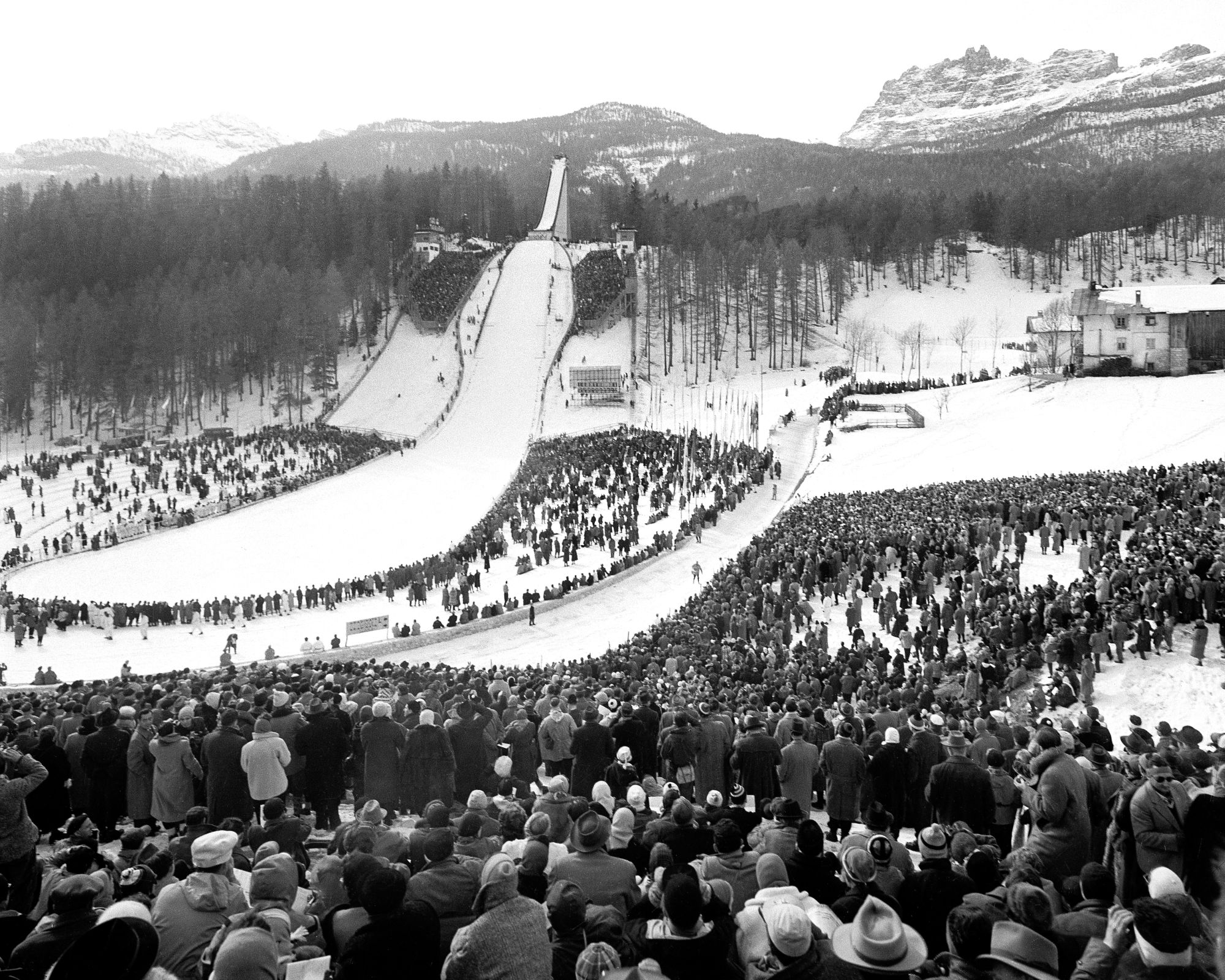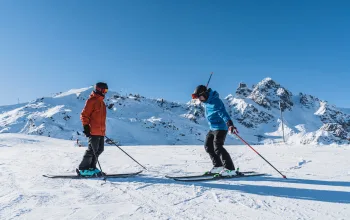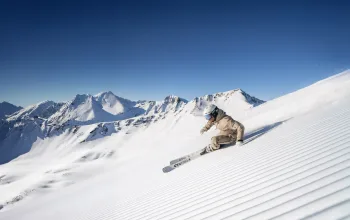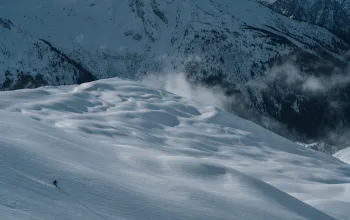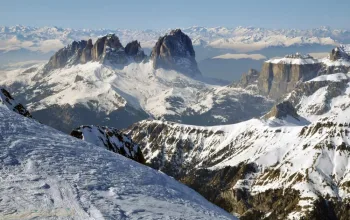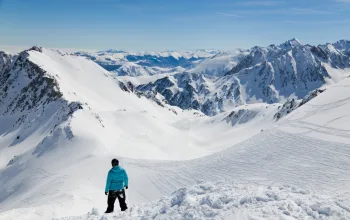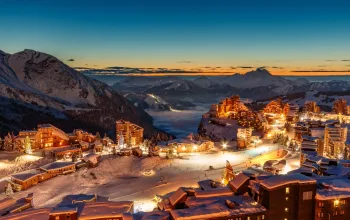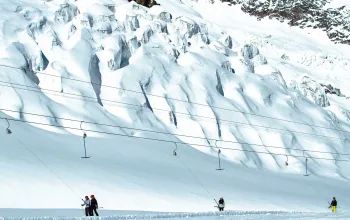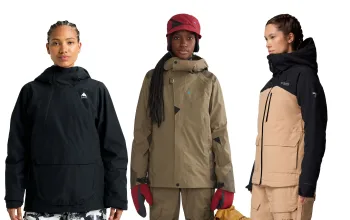This is the corner where Mikkaela Shiffrin crashed last year,” says my guide Andrea Piccoliori, as we ski down the Olimpia della Tofane piste in Cortina d’Ampezzo. A few turns further down he stops again. “This is where Sofia Goggia tore her ACL, just before the Beijing Olympics,” he says, “and just down there is where Lindsey Vonn fell earlier this year.” I believe he’s trying to be informative, but knowing that three of the absolute GOATs of alpine skiing have failed, at one time or another, to make it down this piste safely, does not fill me with confidence.
The Olimpia delle Tofane—undoubtedly one of the world’s bucket list ski runs—will, of course, welcome Goggia, Shiffrin, Vonn, and their competitors back this winter, as it hosts the women’s alpine skiing events at Milano Cortina 2026. Famously one of the most technical pistes on the World Cup circuit, with sections where the gradient reaches 65 percent, it’s tricky at the best of times. And the weather when we’re attempting it is terrible.
Low-hanging clouds blanket the entire Ampezzo Valley, painting the sky and the snow the same, uniform, emulsion colour. It’s impossible to see where one ends and the other begins, let alone pick out the contours of the slope. Somehow—slowly—we make it down in one piece. “You chose your day well,” jokes Piccoliori, as we ride up the next chairlift, with that slightly nauseating, white-out feeling of being unable to tell up from down. “This really must be the worst visibility of the year.”
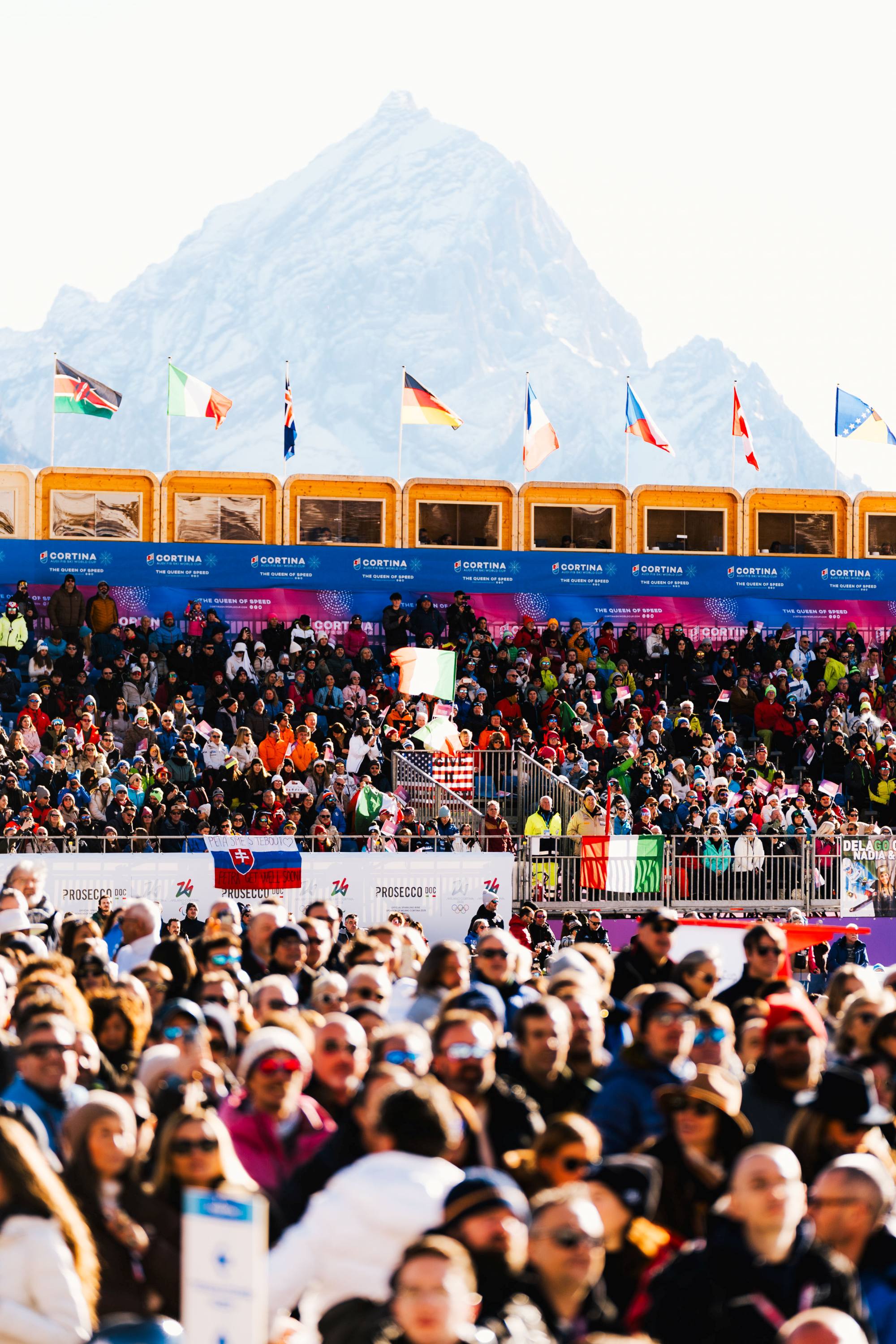
This is a particular shame in Cortina, because the resort is famous for being one of the most scenically stunning anywhere in the world. It’s known as “The Pearl of the Dolomites,” but the peaks surrounding it—most of which I thankfully saw on my drive in the previous day—are sharper than the edge of any oyster shell. There are the precipitous cliffs of the Tofane group to the northwest, the jagged ridge Pomagagnon and the hulking form of Cristallo to the northeast, the Sorapis group to the southeast, and to the southwest, the craggy spikes of the Croda da Lago.
“The mountains are so jagged, Stallone came here to film Cliffhanger—the Rockies weren’t rocky enough”
These are mountains so rocky that when Sylvester Stallone was looking for a location for his 90s classic Cliffhanger, he came here instead of the literal Rockies, where the story was actually set. That’s not the only Hollywood production to have been attracted by these unparalleled landscapes. “I just did safety work for Cliffhanger 2,” says Piccoliori, who as a mountain guide and safety expert regularly gets work on film sets. “It’s being shot by Jimmy Chin [of Free Solo fame], and they have Lily James starring,” he says.
He also recently worked on the shoot for Solo, the Star Wars film telling the backstory of Han Solo. “Their budget was so big, there were about 70 of us guides working on the movie,” he says. He was recruited as a fully-qualified IFMGA safety expert,“but guess what my job was? I just brought people their coffee,” he laughs. Yet even this enormous Disney-backed behemoth will pale into insignificance compared to the production that will take over the town from the 4th to the 22nd February 2026.

Ampezzo gets amped
The pre-Olympic buzz is palpable in Cortina, even when I visit 11 months out from the Games. There’s an enormous countdown clock in the cobbled square outside the 18th Century Basilica of Saint Phillip & Saint James, the town’s central church. The giant Olympic rings outside the art gallery (yes, Cortina is the kind of ski resort that has its own art gallery) are already attracting selfie-seeking tourists.
Meanwhile, the shelves of the main department store on the Corso Italia, Cortina’s famously-upmarket central shopping street, are heaving with official merch. I even spot at least one pasticceria, or cake shop, selling the kind of five-ringed confection that got London bakers in trouble in the run-up to 2012.
Ampezzans appreciate what the arrival of the Games means perhaps more than anyone, because the Winter Olympics helped put Cortina on the map. The town had been a tourist destination since before the First World War, when it was still part of the Austro-Hungarian Empire. (Hemingway famously came here to go fishing in the 1920s, and wrote a short story about it). But it was only after the Second World War, when the International Olympic Commitee chose it as the host resort for the 1956 Winter Olympics, that Cortina became one of the most fashionable wintersports destinations in the world.
“Sophia Loren, Brigitte Bardot, they all came here”
Sophia Loren attended the Games as a guest, and having seen or heard what the resort had to offer, other stars including Brigitte Bardot, Audrey Hepburn and Frank Sinatra soon followed in her footsteps. If the town’s prior reputation had been slightly stuffy—the kind of place minor European royals hung out to go hunting—the combination of the Games’ global spotlight and Italy’s postwar boom in fashion and design transformed it into the place to be seen. This was the resort where the Gucci and Prada families took their skiing holidays (it features prominently in the 2021, Lady Gaga-starring House of Gucci) and it became a key location for the 1981 James Bond film For Your Eyes Only.
Bond—then at the height of his Roger Moore, eyebrow-raising era—beds a girl in the Miramonti Majestic Grand Hotel, and then makes the most of the Olympic facilities, dodging bullets by an East German sniper as he jumps off the ski jump, and then escaping from henchmen on motorbikes by skiing down the bobsleigh track.
If Cortina knows how to host the Games, it’s also learned a few lessons about what not to do since the last time around. The ski jump featured in the Bond film is now just a crumbling concrete hulk, having lost its FIS certification in 1990, and the bobsleigh track was mothballed in 2008, because it cost too much to run, and was rarely used. In order to avoid creating similar white elephants this time around, the Milano Cortina 2026 organising committee are re-using as many existing facilities as possible—with arguably the best example being the Cortina Ice Rink.

Putting history on ice
Giacommo Colli, the Deputy General Event Manager for Curling, shows me around. “I was born and raised in Cortina and I’m a curling player, so I know the venue really well,” he says. The original structure was built out of wood—with concrete supports—for the 1956 Games, he explains. It hosted not just the curling, as it will in 2026, but also the ice hockey, and the opening ceremony. Colli shows me the cauldron where the Olympic flame burned out the front near the café. Incredibly it was an open-air ice rink. “Back then they knew it would be cold enough in winter,” says Colli, and the stadium had grandstands on three sides only.
“In 2002, they realised that if they wanted to keep using it, they needed to close it,” he says. So a fourth wall was added—a stunning structure made out of 1,300 square metres of glass, which looks futuristic but is still sympathetic to the original design. They also built a roof. The only thing they have to construct now to make it ready to host the world’s best curlers—Team GB’s medal hopeful Bruce Mouat and his team among them—was a new changing room complex. “Come and see the old one, you’ll understand why,” says Colli. “There’s been sweaty ice hockey players changing here since 1956, and it stinks!” He’s not wrong—somehow even the concrete seems to be impregnated with eau de hockey jock.
Of course there are some completely new bits being built for the Games. “Cortina used to have an airport in the 70s,” Mia Agostini, who works for the resort’s marketing department, “and that’s where they’re building the Olympic village—it’s the only flat place in the valley.” In keeping with Milano Cortina’s overall aim of reducing the financial and environmental costs of construction, however, this will be a temporary structure that will be dismantled once the Games are over. The main road into Cortina is also being widened and repaired—but this is work that was needed anyway, and will cut transfer times for future guests.
The one thing that doesn’t quite fit with the low-impact plans for the Games is the brand new bobsleigh track being built near the bottom of the Tofana lifts. It’s an impressive-looking project, 1,730m long, with 16 curves. Construction workers are crawling all over it like ants as Andrea Piccoliori and I ride up the lifts. It will, apparently, follow some of the route of the old track, but none of the existing structural elements could be used. Instead, they’re building it from scratch at an estimated cost of €118 million, and it will require the pouring of hundreds of tonnes of new concrete. The project has been controversial—even the International Olympic Committee said they would have preferred that Italy ‘borrow’ a neighbouring country’s facilities for the Games.
Yet none of this overshadows the sense of excitement that locals feel about the five-ringed circus coming to town. When organisers put out a call for 18,000 Olympic volunteers to work at the various Milano Cortina locations across Italy, apparently 50,000 people applied. “Cortina has so much natural beauty and so much to offer,” says Alice Colli, the friendly receptionist at the Barisetti Sport Hotel, where I’m staying, “I believe it’s impossible somebody can’t see it, even if it’s only on television.” The groundwork has been laid. The locals are ready. All that remains is for the likes of Mikkaela Shiffrin, Sofia Goggia and Lynsey Vonn to show up—and, hopefully, do a better job of racing down the Olimpia delle Tofane than I managed.

Snow How
Our trip
Tristan’s trip was supported by Cortina Marketing, the official resort tourist board. Their website is packed full of tips on visiting Cortina d’Ampezzo.
Getting there
The best airport for Cortina is Venice Marco Polo. British Airways offer multiple flights per day from London Heathrow.
When to visit
Accommodation is only available at ludicrous prices during the Olympics themselves, but all the improvements will still be there after the Games, making it a great time to visit.
Guides
For ski or mountain guiding—or, if you’re a film star wanting an expense coffee delivery service—contact the Cortina Guide’s office.



